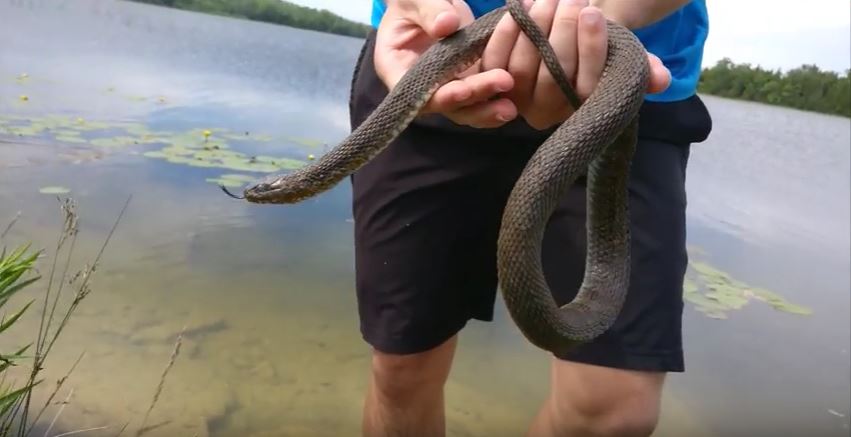The Northern Water Snake: appearance, biology, life cycle, habitat, diet, behavior

The northern water snake is abundant and it is one of the most encountered reptiles. It does not have any venom, but it can defend itself and it can bite if it is feeling threatened. These water snakes are aggressive, and they are also known to climb on branches over bodies of water to rest. If they are disturbed, they may enter the water, and sometimes they do fall into boats that are passing under the trees.
Appearance: The northern water snake can be reddish, brownish, or gray. It may have a dark crossband on the neck with dark stripes and blotches on the rest of the body, and this is why it may be misidentified as being a copperhead or cottonmouth. As they grow older, their color darkens.
Diet: The northern water snake normally eats small fish, mostly slow moving fish or other animals that they can find in shallow water. As the water snake grows over 1.5 feet, it will start to eat larger animals and frogs. The females are normally heavier and also larger compared to the males, and they grow considerably faster compared to the males.
Behavior: The northern water snake is active during both the daytime and nighttime. It can be found basking on brush, stumps or rocks. In the daytime, it goes hunting at the edge of the water to get mammals, birds, salamanders, crayfish, leeches, worms, frogs and fish. During the night, it spends more time eating minnows or other small fish that may be sleeping in the shallow water.
Reproduction: Northern Water Snakes mate from April to June. They are live bearers, which means that they do not lay eggs but give birth to young snakes.
Habitats: Northern water snakes can live in beaver lodges and muskrat houses. They can hide in plant stems and sticks. They are found in canals, rivers, marshes, ponds and lakes or any other place where they can find access to fresh water. The snake may share their winter dens with black rat snakes and copperheads.
Go back to the How to Get Rid of Snakes page or email us if you have any other questions about The Northern Water Snake: appearance, biology, life cycle, habitat, diet, behavior
About Us
We are the Pest Education Network, a non-profit organization that focuses on wildlife and pest removal education. Our approach utilizes Integrated Pest Management, a strategy advocating prevention and humane methods.


